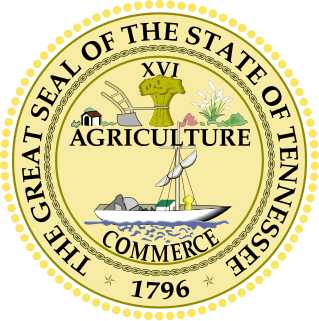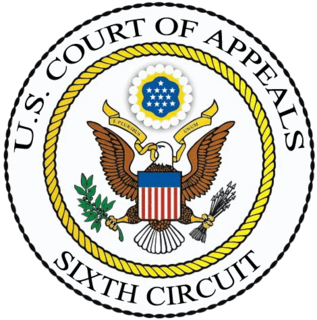| Bell v. Cone | |
|---|---|
 | |
| Argued March 25, 2002 Decided May 28, 2002 | |
| Full case name | Ricky Bell, Warden v. Gary Bradford Cone |
| Docket nos. | 01-400 |
| Citations | 535 U.S. 685 ( more ) 122 S. Ct. 1843; 152 L. Ed. 2d 914 |
| Argument | Oral argument |
| Prior history | Cone v. Bell, 956 F. Supp. 1401 (W.D. Tenn. 1997); affirmed in part, reversed in part, 243 F.3d 961 (6th Cir. 2001); cert. granted, 534 U.S. 1064(2001). |
| Subsequent history | Cone v. Bell, 359 F.3d 785 (6th Cir. 2004), reversed and remanded by Bell v. Cone, 543 U.S. 447 (2005) (per curiam); Cone v. Bell, 492 F.3d 743 (6th Cir. 2007), vacated by Cone v. Bell , 556 U.S. 449, 463 (2009). |
| Holding | |
| Tennessee state courts did not unreasonably apply clearly established law when determining whether the defendant in this case was denied effective assistance of counsel | |
| Court membership | |
| |
| Case opinions | |
| Majority | Rehnquist, joined by O'Connor, Scalia, Kennedy, Souter, Thomas, Ginsburg, Breyer |
| Dissent | Stevens |
| Laws applied | |
| Antiterrorism and Effective Death Penalty Act of 1996, | |
Bell v. Cone, 535 U.S. 685 (2002), was a Supreme Court of the United States case that upheld a death sentence despite the defendant's argument that he should not be sentenced to death because he was suffering from drug-induced psychosis when he committed the crimes. [1] Cone also argued that he was denied effective assistance of counsel because his attorney failed to present sufficient mitigating evidence during the sentencing phase of his trial and that his attorney inappropriately waived his final argument during the sentencing phase. [2] In an 8–1 opinion written by Chief Justice William Rehnquist, the United States Supreme Court denied Cone's petition for a writ of habeas corpus. [3] The Court held that the actions taken by Cone's attorney during the sentencing phase were "tactical decisions" and that the state courts that denied Cone's appeals did not unreasonably apply clearly established law. [4] Justice John Paul Stevens wrote a dissenting opinion in which he argued that Cone was denied effective assistance of counsel because his attorney failed to "subject the prosecution's case to meaningful adversarial testing." [5]

The Supreme Court of the United States is the highest court in the federal judiciary of the United States. Established pursuant to Article III of the U.S. Constitution in 1789, it has original jurisdiction over a small range of cases, such as suits between two or more states, and those involving ambassadors. It also has ultimate appellate jurisdiction over all federal court and state court cases that involve a point of federal constitutional or statutory law. The Court has the power of judicial review, the ability to invalidate a statute for violating a provision of the Constitution or an executive act for being unlawful. However, it may act only within the context of a case in an area of law over which it has jurisdiction. The Court may decide cases having political overtones, but it has ruled that it does not have power to decide nonjusticiable political questions. Each year it agrees to hear about 100–150 of the more than 7,000 cases that it is asked to review.
In United States law, ineffective assistance of counsel is a claim raised by a convicted criminal defendant asserting that the defendant's legal counsel performed so ineffectively that it deprived the defendant of the constitutional right guaranteed by the Assistance of Counsel Clause of the Sixth Amendment to the United States Constitution. Having the 'benefit of counsel' or 'assistance of counsel' means that the criminal defendant has had a competent attorney representing them. Competence is defined as reasonable professional assistance and is defined in part by prevailing professional norms and standards. To prove they received ineffective assistance, a criminal defendant must show two things:
- Deficient performance by counsel
- Resulting prejudice, in that but for the deficient performance, the result of the proceeding would have differed

The Chief Justice of the United States is the chief judge of the Supreme Court of the United States, and as such the highest-ranking judge of the federal judiciary. Article II, Section 2, Clause 2 of the Constitution grants plenary power to the President of the United States to nominate, and with the advice and consent of the United States Senate, appoint a chief justice, who serves until they resign, are impeached and convicted, retire, or die.
Contents
- Background
- Petitions for postconviction relief
- Opinion of the Court
- Justice Stevens' dissenting opinion
- Subsequent developments
- Analysis and commentary
- See also
- References
- External links
Commentators have noted that Bell v. Cone is significant because it clarified the standards that should be used when determining ineffective assistance of counsel claims. [6] Other commentators have suggested that the Court's ruling has made it more difficult for state prisoners to receive habeas relief in federal court. [7] After several additional appeals, the United States Supreme Court ruled in Cone v. Bell (2009) that Cone should receive a new hearing in federal trial court to determine whether the prosecution's failure to disclose evidence violated Cone's rights to due process under Brady v. Maryland . [8] In 2016, Gary Cone died from natural causes while still sitting on Tennessee's death row. [9]
Cone v. Bell, 556 U.S. 449 (2009), was a case in which the United States Supreme Court held that a defendant was entitled to a hearing to determine whether prosecutors in his 1982 death penalty trial violated his right to due process by withholding exculpatory evidence. The defendant, Gary Cone, filed a petition for postconviction relief from a 1982 death sentence in which he argued that prosecutors violated his rights to due process under the Fourteenth Amendment by withholding police reports and witness statements that potentially could have shown that his drug addiction affected his behavior. In an opinion written by Justice John Paul Stevens, the Supreme Court held that Cone was entitled to a hearing to determine whether the prosecution's failure to disclose exculpatory evidence violated Cone's right to due process; the Court noted that "the quantity and the quality of the suppressed evidence lends support to Cone’s position at trial that he habitually used excessive amounts of drugs, that his addiction affected his behavior during his crime spree". In 2016, Gary Cone died from natural causes while still sitting on Tennessee's death row.
Brady v. Maryland, 373 U.S. 83 (1963), was a landmark United States Supreme Court case that established that the prosecution must turn over all evidence that might exonerate the defendant to the defense. The prosecution failed to do so for Brady and he was convicted. Brady challenged his conviction, arguing it had been contrary to the Due Process Clause of the Fourteenth Amendment to the United States Constitution.




